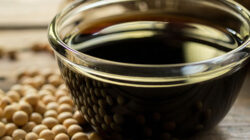No Sugar January
This coming January, join the many consumers who will embark on a month of clean eating by eliminating sugar from their diets. While a new year typically represents a fresh start, the month of January is known as No Sugar January for those looking to clean up their diets post-holiday indulgence. We thought it’d be fun to take a look at sugar consumption in the US and ways to help consumers achieve their “no sugar” goals.
Sugar Consumption
The U.S. government has long recognized that its citizens have a collective sugar problem. Back in 1822, US consumers consumed 45g of sugar every 5 days—which is as much as one can of soda!1 Today, we are consuming as much as 126g each day – 14 times the amount as our ancestors.2 Looking to get our collective sweet tooth under control, the FDA mandated nutrition labels to clearly identify the “added sugars” in a product. Larger manufacturers have until 2020 to implement the new labels while smaller brands have another year before they are considered non-compliant. It is recommended that 10% of total energy intake is the most that should be consumed with 25 grams being the ideal.3 Another guideline limits sugar intake to 10% of total daily calories.4 The obvious benefit from sugar reduction is overall health and improving the risk of obesity, Type 2 diabetes and other life-threatening illnesses.
Combining the awareness that the labels have created with consumer’s health goals, ideas like No Sugar January have made it easy to minimize the sugar in their diets. Search “no sugar challenge” on Google and about 529,000,000 results5 appear. For “No Sugar January,” you’ll see top sites like Pinch of Yum that share the journey with a detailed No Sugar January eating program. There is even a “Sugar Awareness Week” each January where consumers are asked to join in for five days of no sugar. For 2019, that week is January 15-19.6
More Sweet Stuff:
- Social media has more than its share of “no sugar challenges.” #nosugar has more than 1.4 million posts—many which share the results of avoiding sugar.
- Did you know there are at least 50 names for sugar on labels? Check them out here.
- The FDA recently approved chicory and insulin to be labeled as fiber ingredients despite both ingredients’ abilities to sweeten a product as much as 65% as sugar.7 This allows manufacturers to incorporate these ingredients without being penalized for adding sugar. These fibers also assist with creating a satisfying mouthfeel and bulk similar to sugar
Finally, if you just have to have something sweet to drink, consider honey water. While honey is sweet like sugar, it has many unique health benefits from the amino acids, minerals and anti-oxidants it contains. Bee’s Water contains only 9-11 grams of sugar, loads of vitamins and only 45 calories and is available in flavors like cinnamon, lemon, orange or blueberry.

